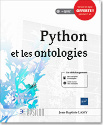New chapter "A 2014 medical informatics perspective on clinical decision support systems"
I have published a new book chapter:
 [x14] Bouaud J, Lamy JB. A 2014 medical informatics perspective on clinical decision support systems: do we hit the ceiling of effectiveness? Yearbook of medical informatics 2014;9(1):163-6
[x14] Bouaud J, Lamy JB. A 2014 medical informatics perspective on clinical decision support systems: do we hit the ceiling of effectiveness? Yearbook of medical informatics 2014;9(1):163-6
BibReview 0.2
BibReview is a software for managing bibliographic database. Here is the latest version 0.2. This version fixes several bugs occurring when merging bases in different languages. It is now availabe on PyPI : https://pypi.python.org/pypi/BibReview !
éClaircie 0.2
This second release of éClaircie, the static and cloud-less blog engine, fixes many bugs and adds support for posts in multiple categories. You can download it here: Download at PyPI.
PyMedTermino 0.3 has been released !
PyMedTermino (Medical Terminologies for Python) is a Python module for easy access to the main medical terminologies in Python.
PyMedTermino 0.3 has been released ; this version supports two new terminologies: MedDRA and CDF (from the French drug databank Thériaque). It also fixes several bugs.
It can be downloaded from PyPI (Python Package Index): https://pypi.python.org/pypi/PyMedTermino
New journal paper "Toward a Formalization of the Process to Select IMIA Yearbook Best Papers"
I have published a new journal paper:
 [j27] Lamy JB, Séroussi B, Griffon N, Kerdelhué G, Jaulent MC, Bouaud J. Toward a Formalization of the Process to Select IMIA Yearbook Best Papers. Methods of information in medicine 2015;54(2):135-44
[j27] Lamy JB, Séroussi B, Griffon N, Kerdelhué G, Jaulent MC, Bouaud J. Toward a Formalization of the Process to Select IMIA Yearbook Best Papers. Methods of information in medicine 2015;54(2):135-44
New chapter "Medical Vocabulary, Terminological Resources and Information Coding in the Health Domain"
I have published a new book chapter:
 [x13] Duclos C, Burgun A, Lamy JB, Landais P, Rodrigues JM, Soualmia L, Zweigenbaum P. Medical Vocabulary, Terminological Resources and Information Coding in the Health Domain. Medical Informatics, e-Health - Fundamentals and Applications 2014;11-42, Springer
[x13] Duclos C, Burgun A, Lamy JB, Landais P, Rodrigues JM, Soualmia L, Zweigenbaum P. Medical Vocabulary, Terminological Resources and Information Coding in the Health Domain. Medical Informatics, e-Health - Fundamentals and Applications 2014;11-42, Springer
Balazar Safari Photo 0.1!
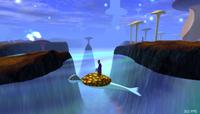
Here is the first version of Balazar Safari Photo, an amazing libre (GPL'ed) 3D action and puzzle game.
In Balazar Safari Photo, enter into a strange world to picture weird monsters! However be prudent since some of these monsters will be difficult. There are the "painful" ones, who run away from you, the "mimetic" that hide in the landscape... and there are the "dangerous", those that want to kill you!
But, for nature protection, Balazar Safari Photo is a non-violent game: you do not have the right to hurt these monsters, even the more dangerous ones!
This first version of the game includes 2 levels.
New journal paper "Improving access to clinical practice guidelines with an interactive graphical interface using an iconic language"
I have published a new journal paper:
 [j24] Pereira S, Hassler S, Hamek S, Boog C, Leroy N, Beuscart-Zéphir MC, Favre M, Venot A, Duclos C, Lamy JB. Improving access to clinical practice guidelines with an interactive graphical interface using an iconic language. BMC medical informatics and decision making 2014;14(1):77
[j24] Pereira S, Hassler S, Hamek S, Boog C, Leroy N, Beuscart-Zéphir MC, Favre M, Venot A, Duclos C, Lamy JB. Improving access to clinical practice guidelines with an interactive graphical interface using an iconic language. BMC medical informatics and decision making 2014;14(1):77
Soya 3D 3-0.1!
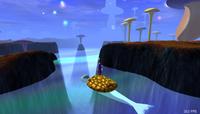

Here is the first stable release (0.1) of Soya 3D 3! Soya is a 3D engine for Python 3.
The most strinking new features are:
Support for the latest Python 3.4 and Blender 2.70
Vertex shaders and pixel shaders ( more information here)
Improved performance: the rendering process has been entirely rewritten, using vertex buffer object (VBO)
Fullscreen antialiasing
Per-pixel lighting and cellshading
GPL v3 license
MIE 2014 Poster : ontologies, clinical trials and automatic bias detection
Here is the poster I presented at MIE 2014, entitled Toward an ontology-based system for the automatic detection of biases and weaknesses in drug clinical trial results.
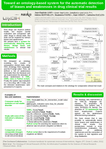
PDF version: mie2014_poster.pdf.
Soya 3D version 3 on Bitbucket!
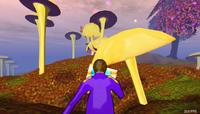
Soya is a 3D engine for Python. The first version of Soya was used in several games including Slune, Balazar and Balazar Brother. Several attempts for writing a second version failed, mainly due to lack of time. Today, the new upcoming version 3 is now available on Bitbucket!
The most strinking new features are:
Support for the latest Python 3.4 and Blender 2.70
Vertex shaders and pixel shaders : Soya divides shaders in no less than 20 mini-shaders, allowing to modify a specific part of the rendering without bothering with the rest; additionaly a Pythonic syntax can be used for writing shaders!
Improved performance: the rendering process has been entirely rewritten, using vertex buffer object (VBO)
Fullscreen antialiasing
Per-pixel lighting and cellshading
GPL v3 license
The development version of Soya 3 can be found on Bitbucket. This version has been tested only under Linux, but it should compile under all major platforms. First screenshots of a secret game project using Soya 3 can be seen here: Secret project.
Secret project
Is it the first images of a secret game project ? Possibly using the Soya 3D engine ?
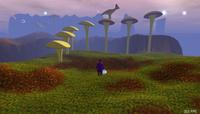
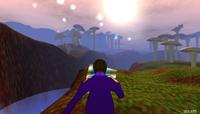
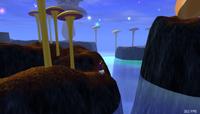

éClaircie 0.1
The first release of éClaircie, the static and cloud-less blog engine, is available! You can download it here: Download at PyPI


